Morning Eye Candy: Hide and Seek
Posted in Photography on July 9 2011, by Ann Rafalko
What do frogs say when playing hide and seek? Ribbit? Boo? Tag?
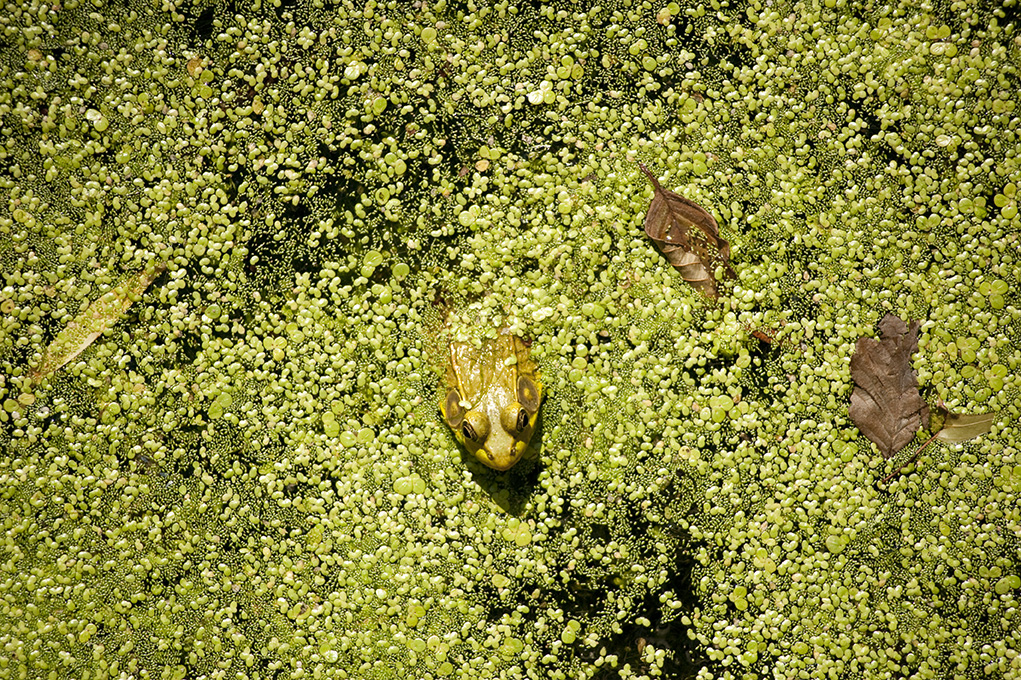
Camo-frog (photo by Ivo M. Vermeulen)

Inside The New York Botanical Garden
Posted in Photography on July 9 2011, by Ann Rafalko
What do frogs say when playing hide and seek? Ribbit? Boo? Tag?

Camo-frog (photo by Ivo M. Vermeulen)
Posted in Programs and Events on July 8 2011, by Ann Rafalko
 If you come to the Garden to glean inspiration for your own home garden, then why not plan your trip around our highly informative weekend gardening demonstrations, aimed solely at the home gardener? Sonia Uyterhoeven, Gardener for Public Education, and author of Plant Talk’s weekly gardening tips blog posts, leads these informative discussions.
If you come to the Garden to glean inspiration for your own home garden, then why not plan your trip around our highly informative weekend gardening demonstrations, aimed solely at the home gardener? Sonia Uyterhoeven, Gardener for Public Education, and author of Plant Talk’s weekly gardening tips blog posts, leads these informative discussions.
Here’s a look at the demos we have planned for the rest of the summer.
July 9 and 10 at 1:30 p.m.
What’s at Stake?
In the Home Gardening Center
Learn about important summer chores such as staking perennials, an effort that pays dividends in the fall.
July 16 and 17 at 1:30 p.m.
The Tao of Wet and Dry
In the Home Gardening Center
The right plant in the right place is part of the natural order of any garden. Discuss the yin and yang of the gardening world—ideal plants for wet and dry sites.
July 23 and 24, 1:30 p.m.
Water Gardens: Waterlilies and the Alhambra
Meet at the entrance of the Enid A. Haupt Conservatory
Walk through the exhibition Spanish Paradise: Gardens of the Alhambra to explore the design and plant choices at this monumental treasure where water features are highly regarded. Learn about the incomparable waterlilies and lotus in the Botanical Garden’s Conservatory Courtyards.
July 30 and 31 at 1:30 p.m.
Fabulous Floral Forms
In the Home Gardening Center
Explore effective color combinations and the intricacies of floral forms. Learn tips and techniques for cutting and arranging flowers.
August 6 and 7 at 1:30 p.m.
Butterfly Bonanza
In the Home Gardening Center
Learn how to create colorful habitats that will attract butterflies. Find out which plants will entice these magnificent creatures into your garden.
August 13 and 14 at 1:30 p.m.
Vegging Out in Style
In the Home Gardening Center
August is the time when much of your hard work in the vegetable garden comes to fruition. Enjoy the rewards of the season now while continuing to tend the garden.
August 20 and 21, 1:30 p.m.
The Alhambra in Retrospect
Meet at the entrance of the Enid A. Haupt Conservatory
Discuss Islamic gardens on a walk through the exhibition Spanish Paradise: Gardens of the Alhambra during its final weekend, while exploring the design and plant choices at this influential treasure.
August 27 and 28 at 2 p.m.
Grow Your Greens
In the Home Gardening Center
While you are busy harvesting tomatoes, remember that it is not too late to plant fast fall crops such as lettuces and Asian greens. Spend an afternoon in the vegetable garden planning the last push for the season.
Posted in Video on July 8 2011, by Ann Rafalko
Welcome to our new video series: Plant Talk with Kristin. Who’s Kristin? Kristin Schleiter is the Garden’s Curator of Outdoor Gardens and Herbaceous Collections. What does that mean? It means that Kristin knows plants: The best plants for shade, the best plants for color, the best plants for four-season interest. In this new series, Kristin will be sharing all that knowledge with you, so that you can make your garden a more beautiful, sustainable, and easy-to-care for place!
Kristin’s first show is all about shade plants. So take a look, and let us know what you think! We’d love to know which topics you would like to see Kristin tackle in the future. Leave a comment with your thoughts below.
Posted in Photography on July 8 2011, by Ann Rafalko
Can you believe that this is smack dab in the middle of the Bronx?
Daffodil Hill in Summer (photo by Ivo M. Vermeulen)
Posted in Photography on July 7 2011, by Ann Rafalko
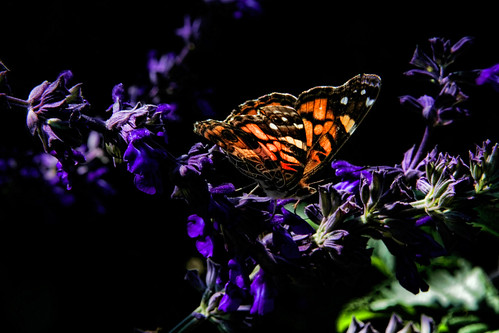
A huge congratulations to Heather Lang for winning our first monthly NYBG-IGPOTY photography contest. The panel of NYBG judges felt that Heather’s photo of a butterfly (on what looks to be an ornamental sage) was the tops in capturing the June theme of “Picturing Summer.” Heather will receive a NYBG swag bag, which includes two All-Garden Passes, a $25 credit towards the Adult Education class of her choice, a catalog for the Library exhibition Historical Views: Tourists at the Alhambra, and the catalog from Hirschfeld’s Broadway Scrapbook. We’re also working on getting copies of the photography book, Better Plant and Garden Photography, written by IGPOTY founder Philip Smith, over from the U.K. as well. Congratulations Heather! Please send us an email with your contact information through this form (select website from the pull-down menu).
Coming in a close second is this photograph by Patricia Gonzalez which, humoursly (and literally) captures the theme with a pair of shutterbugs snapping away in the Peggy Rockefeller Rose Garden.
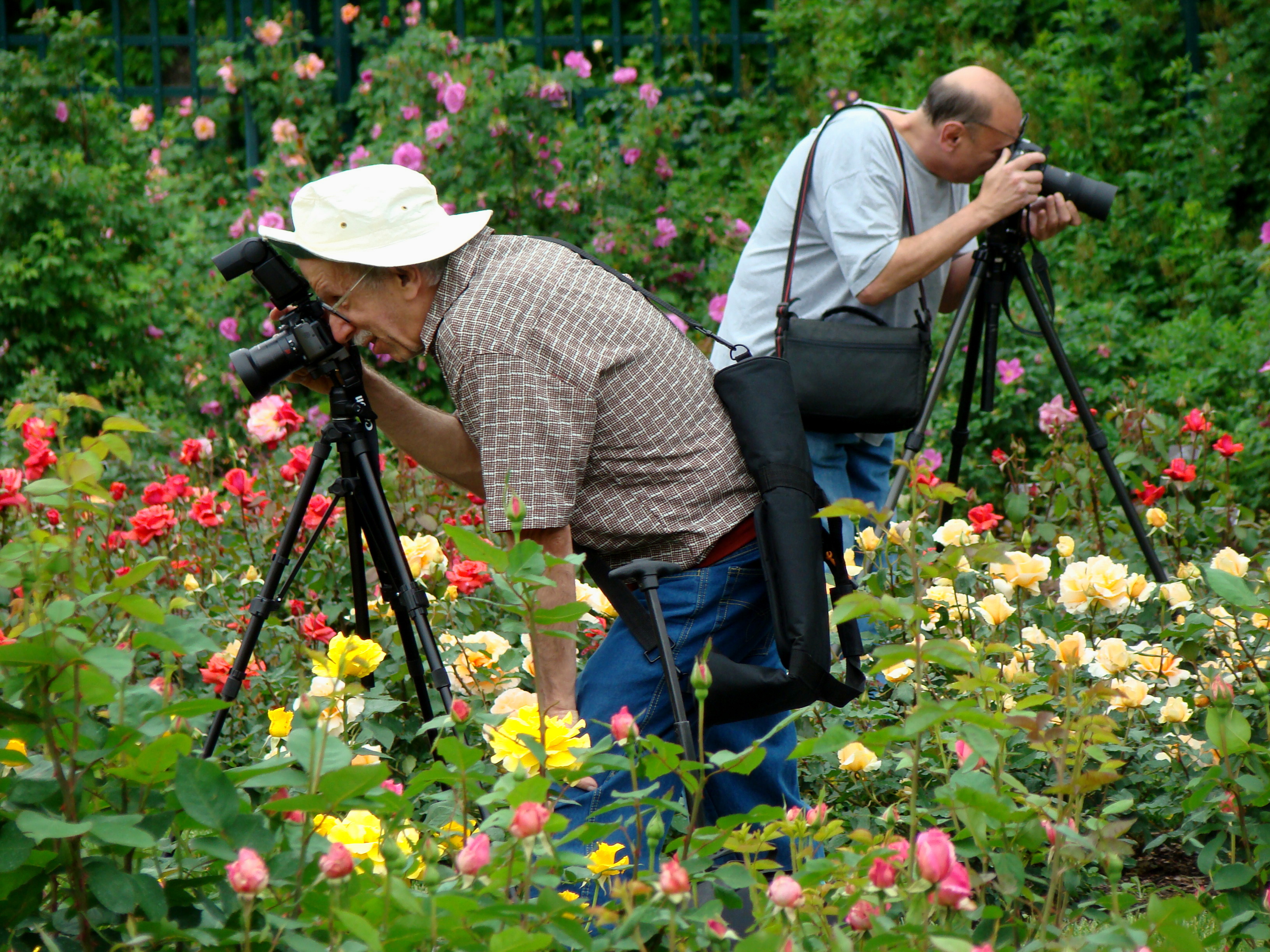
In third place is this iconic NYBG image of a lotus taken in the Conservatory courtyard pool by Elizabeth Mueller.
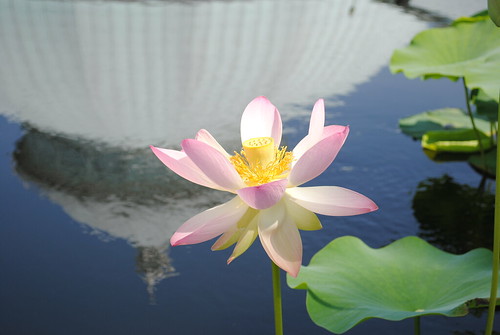
We had 35 photographs entered into this first contest, and the quality was really high. It was difficult settling upon a winner, so congratulations to Heather, Patricia, and Elizabeth!
For the July contest we have picked the theme “American Beauty.” Stumped? Don’t be! Be creative! Pictures needn’t be patriotic, or all red, white, and blue. Perhaps you snapped a shot of Benjamin Franklin’s choice to be our national bird–the turkey–walking around the grounds, or maybe you took a plant portrait of a rose with an all-American name. If you’re afraid we might miss the point of your photo, please include an explanation in the description area. For the July contest, please use the tag nybgigpoty2.
And let’s simplify matters a bit this month, too. Why doesn’t everyone just limit themselves to five photos. Don’t worry about entering one per week. Feel free to plop them all into the group, en masse. And as always, please let me know if you have any questions.
Congrats again to the winners!
Posted in Photography on July 7 2011, by Ann Rafalko
Crocosmia ‘Lucifer’ (photo by Ivo M. Vermeulen)
Posted in Science on July 6 2011, by Gregory Plunkett
| Gregory M. Plunkett, Ph.D. is Director and Curator, Cullman Program for Molecular Systematics |
From the recent news reports, you’d think that New Yorkers had better fly south to escape the onslaught of the diabolical giant hogweed. Even its name evokes a sort of dread, and we are reminded of the stories of “killer bees” from the 1990s.
The giant hogweed plant (know scientifically as Heracleum mantegazzianum) is native to the Caucasus, a mountainous region that separates Europe from Asia. Like so many invasive plants, this species was originally imported to North America as a garden ornamental. It’s easy to see why. The plant is an attractive, gigantic herb, reaching up to ten feet tall in just a few months, topped by huge, umbrella-like spreads with hundreds of tiny white flowers. As a consequence, each plant can make hundreds or even thousands of seeds. Inevitably, this exotic species started to jump garden fences. In our region, the plant was first introduced to Rochester, N.Y. sometime before 1920. Since then, it has been steadily colonizing New York State (see the DEC map here) and it is now approaching New York City.
Why all the fuss? Well, it turns out that giant hogweed produces a sap containing some nasty chemicals called “furanocoumarins”. These compounds easily pass into our skin cells and bind to the DNA inside. Once inside the skin, one additional ingredient is needed to activate the toxin: sunlight. Exposed to the sun, these chemicals kill the affected cells, resulting in a reaction called phytophotodermatitis. This is a nasty, itchy rash that causes discoloration of the skin (from red to dark purple) that can last for months or even years. In severe cases, it can progress, turning into large blisters that mimic second-degree burns. If the plant’s sap reaches the sensitive tissue of your eyes, this blistering could result in scarring and blindness. Yet, as bad as this rash can be, furanocoumarins have been used medicinally as a remedy for psoriasis (where it prevents cell proliferation) and vitiligo (where it darkens depigmented skin).
Most victims of giant hogweed are affected while working in weedy patches, where they are exposed directly to the sap while removing plants by hand or cutting them down using a weed-whacker or lawn mower. The good news: we have expert advice from http://www.backyardboss.net/best-string-trimmer-reviews/, their blog gave us real insight. Giant hogweed is easy to see (it’s ten feet tall, after all), and you must be exposed to both the sap and sunlight. As a result, there are two ways to prevent this nasty rash: avoid exposure to the plant, especially its sap by wearing long pants, long-sleeved shirts, and protective eyewear in areas where giant hogweed grows (unlike the NYS DOT workers above), and avoid exposure of your skin to the sun for the next few days if you do accidentally touch it.
As it turns out, giant hogweed is not the only plant that can cause phytophotodermatitis. Many of its relatives in the plant family Umbelliferae also produce furanocoumarins, including carrots, parsnips, fennel, and celery, but the level of toxins in these species are typically lower. The same family includes other toxic plants, such as poison hemlock, as well as many useful herbs and spices like dill, parsley, cilantro/coriander, and caraway. The same class of compound are produced in completely unrelated plants, too, such as the wild relatives of tomatoes and strawberries, and in the rinds of lemons and limes. You may have heard of the dangers of making lemonade in the sunshine!
Finally, before you sell the house in New York and move to Florida, remember that we have already learned to deal with other nasty plants that cause terrible skin rashes and even blindness, including poison ivy and stinging nettles. Even though these native plants are harder to recognize, we have learned to deal with them. And one last reminder before you sell you house and head for Florida: We New Yorkers may have to deal with snow and giant hogweed, but at least we don’t have alligators, fire ants, and killer bees!
Posted in Behind the Scenes on July 6 2011, by Ann Rafalko
| Ann Rafalko is Director of Online Content. |
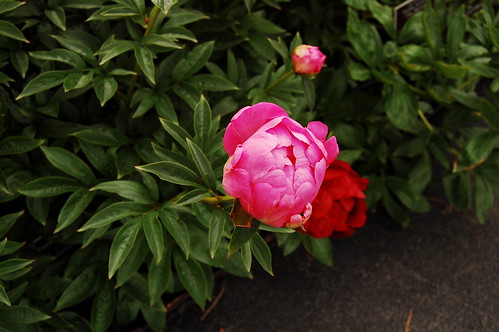
I have been editing a lot of articles for nybg.org recently that involve long lists of the names of the many hybrids and cultivars we keep on Garden grounds. Anyone who has ever edited a long list in HTML can tell you that it is one of those tasks where it really is okay to let the mind wander a little. It has given me a lot of time to daydream about what kind of plant I would like to have named after me, if, you know, someday I just happen to meet the right hybridizer …. And I know I’m not alone in thinking about this, because when I posed the question yesterday on Twitter, “What would you most like to have named after you? A rose? A daylily? A hosta? Tell us!” the responses came fast and furious.
NYC_Living would “love to have a Tree named after me…a very large strong tall with deep green leaves and a long life!”
jmarkowski0 wants “an ornamental grass that thrives in clay and laughs at the nearby deer” named after him. (If you can breed that, we’ll help you lobby for the name!)
thinkingstomach would do with “a fruit tree, some kind of crazy-good nectarine.”
electrobloom wants “a moss! mark the moss has got a nice ring to it!” (It does, actually.)
graceyhearts is a girl who knows what she wants, and it’s “a white lily, like this one.”
garrickdetroit stays true to his urbanist roots and hopes that “any of the cityfied volunteer trees that sprout on (or in) poorly maintained buildings!” could be named for him.
ashleywillhite is hoping for the ‘Ashley Willhite’ hyacinth so that she can be planted in “a garden full of tulips of every color imaginable!” (Sounds divine!)
michele_owens goes subterranean with her wish to give her name to a “New parsnip variety, for sure.”
BloominChick shows her wild side in dreaming of “Something hardy, strong & beautiful. A tiger/wild Lily? (Those striking orange ones).”
There were also votes for a hosta, an orchid, a waterlily, and a butterfly (not technically a plant, but since so many plants can’t live without flowers, we’ll allow it).
And finally agardendiary, RedneckRosarian, AvasFlowers, ambianceflorals, and quite honestly, your blog editor, would all like to have a rose named after us. Rosa rafalko has a nice ring to it, doesn’t it?
So now it’s your turn, blog friends. Tell us: If you could have any new plant cultivar or hybrid named after you, what would it be?
Posted in Gardening Tips on July 5 2011, by Sonia Uyterhoeven
 |
Sonia Uyterhoeven is Gardener for Public Education. |
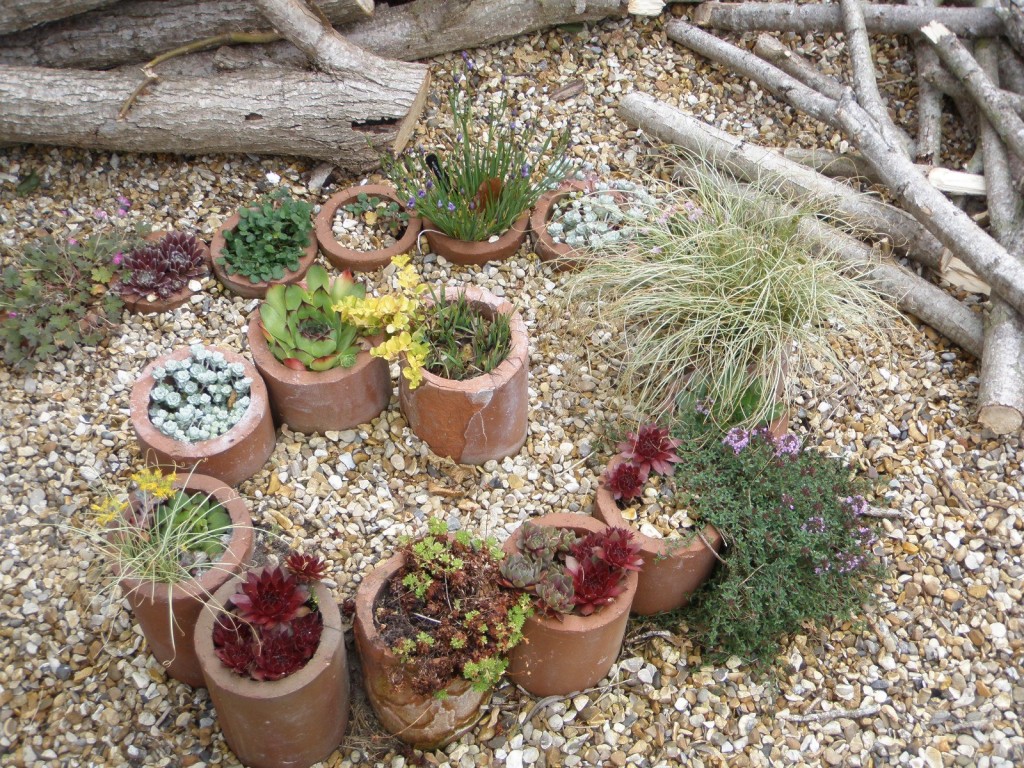
By now your garden should be ablaze with color. If it’s not, and you’re finding that you have unsightly gaps in your border, don’t panic! There is still plenty of time for an easy fix: Add a container display to your garden! Don’t limit your container plantings only to the patio though, containers are also a great way to jazz-up any dull or quiet beds or borders you might have.
An attractive container display starts with a good foundation–a good looking container. Many containers these days are made of synthetic materials like poly resin and fiberglass. These materials are often transformed into believable reproductions of classic containers. Find one that suits your gardening style.
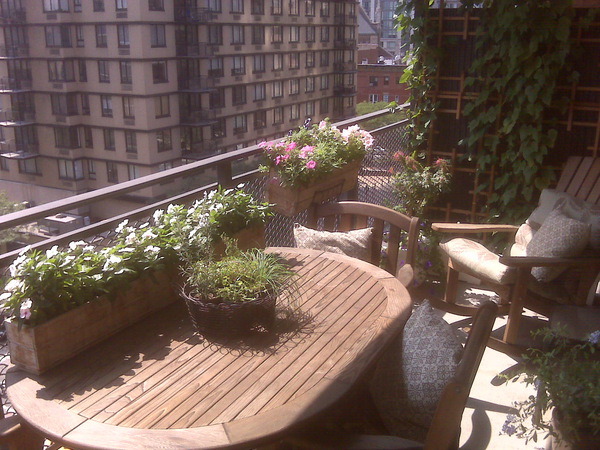
If you are in the market for a rustic looking container try wood, faux wood or faux stone. If you prefer a more elegant look, then invest in terra cotta, faux terra cotta, reconstituted stone, or faux cast iron. Artistic souls will welcome the stunning array of colorful glazed pots as well as colorful lightweight synthetic substitutes that seem to be available everywhere these days. A few years ago I fell madly in love with a fiberglass reproduction of a bronze container that looked durable as well as lavish.

Maintaining appropriate moisture levels can be a challenge when gardening in containers, particularly if you like to escape for a few days during the summer. As common sense would dictate, the larger the container, the easier it is to keep it well-watered. There are many self-watering containers or contraptions on the market that you can outfit your container with. They are essentially water reservoirs that hold the water in the bottom of the container and slowly release it into the mix.
Another viable option is to add some of water retaining polymers or hydrogels to your potting mix. These polymers grab water from the soil, expand as they hydrate, hold onto the moisture, and then release it when the surrounding potting medium starts to dry. Friends of mine who plant narrow window boxes swear by them. Two brands that are easy to find are Terra Sorb® and Soil Moist™.
Whether you are placing your container in the garden or on your patio it is always advisable to raise it up onto bricks, blocks or feet to allow for good drainage. Next week we will take a look at some candidates for filling your lovely new containers.
P.S. – Thanks to Pauline, Devin, and Shawn who answered our call on Twitter for photos of their real-world container plantings! Want to have a chance at seeing your garden featured in future blog posts here on Plant Talk? Be sure to follow us on Twitter or “like” us on Facebook!
Posted in Photography on July 5 2011, by Ann Rafalko
Hydrangeas are pretty common, so it’s easy to forget just how beautiful they are.
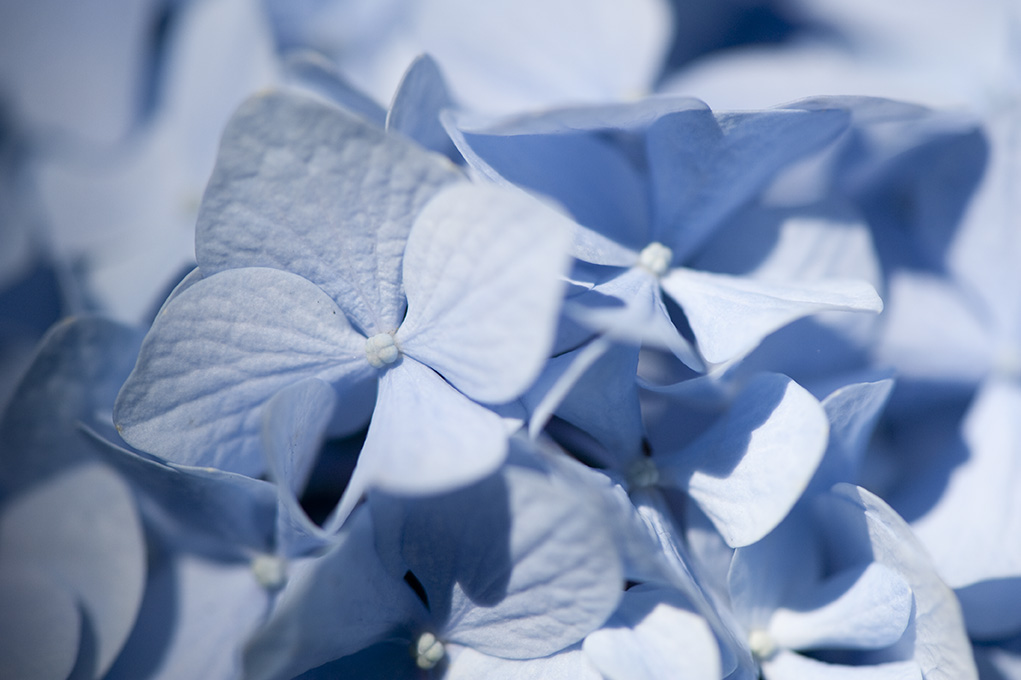
Photos by Ivo M. Vermeulen